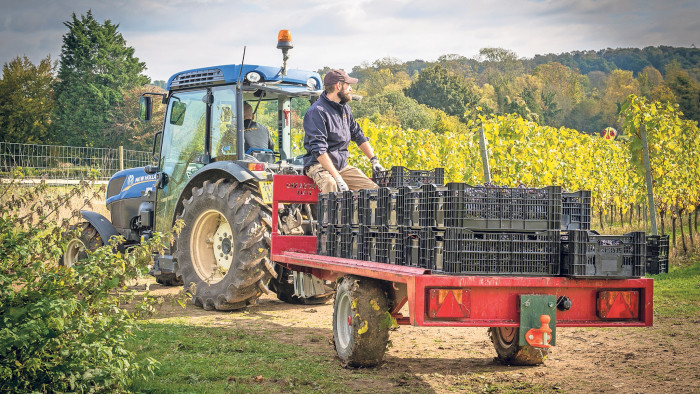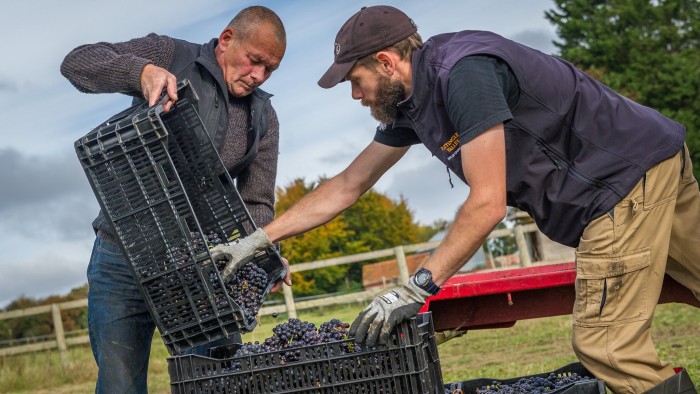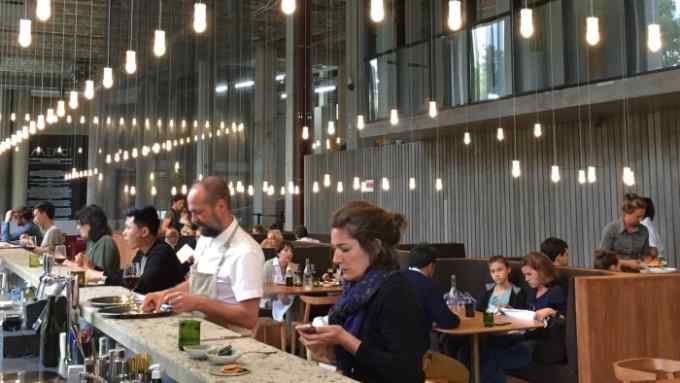Brexit bonus for English sparkling winemakers

One of the enduring images of the Brexit campaign last year was that of pro-Leave supporters drinking pints of British beer in a pub, with its suggestion of unpretentious patriotism. Yet it is another locally produced alcoholic drink which has done surprisingly well out of Brexit: English sparkling wine.
“Brexit and global warming have been good for us, I’m afraid,” says Gareth Maxwell, sales and export manager at sparkling winemaker Hattingley Valley, a bit sheepishly. A weakening of the pound against other major currencies — 15 per cent since last summer’s referendum — has made Hattingley Valley’s bottles cheaper for foreign buyers, while also raising the price of champagne and other imported sparkling wines. Hattingley exports 40 per cent of its output, around 140,000 bottles.
Weaker sterling has made English wine sought after overseas: producers highlight buyers in the USA, Scandinavia and Japan. Miles Beale, chief executive of the Wine and Spirit Trade Association, says that, in response to demand, UK wine producers intend to increase exports from 10 per cent of production in 2015 to 25 per cent, or 1.67m bottles of sparkling wine, by 2020.
More attractive export prices should help English brands to build market share in countries that had previously expressed little interest in their wines, makers suggest. Overseas buyers keen on an alternative to non-champagne offerings such as Spanish cava or Italian prosecco may turn now to English sparkling wine — and stay there even if the pound rises. It is too early to see if this is true, but winemakers say that they are getting a good reception.
The falling pound works both ways, however. Most winemaking equipment, according to the WSTA, comes from the EU, so a weaker pound means imported machinery and even bottles cost more than a couple of years ago. For example, corks, wires, bottles and other winemaking equipment have risen about 9 per cent for producer Chapel Down. Assuming volumes and prices hold up, this should present less of a problem.

As Mr Maxwell indicates, another unpopular phenomenon has been helping English sparkling winemakers. Warmer weather extending into September over the past few years, likely attributable to climate change, has helped to produce sweeter grapes with a less bitter taste. The UK’s Meteorological Office reports that the country’s summer rainfall has decreased on average in the last century, and that summer comes earlier and lingers longer.
“We’ve definitely seen longer summers,” says Sam Linter, managing director of the Bolney Estate, which has been producing red and white wine in West Sussex since 1972 and sparkling wine since 2000. Longer summers mean greater “phenolic ripeness”, where flavour molecules in the grapes’ skin develop, “and that has led to more complexity in our wines”, Ms Linter says.
English success here is more complicated than good fortune from a weaker exchange rate and a warmer climate. Longstanding producers such as Bolney, and Camel Valley further away in Cornwall, have survived years of relative anonymity by investing in their facilities, raising the quality of their wines and nurturing their fan bases.
Although English makers have won international awards for their sparkling wines since the 1980s, the move upwards occurred during the 1990s, when start-ups such as Sussex-based Nyetimber and Ridgeview, and Chapel Down in Kent, converted to the typical champagne grapes (chardonnay, pinot noir and pinot meunier).
A number of the larger winemakers plan to take advantage of their growing international reputation by expanding production. Ridgeview, one of England’s biggest producers, will lift its output by 60 per cent to 400,000 bottles by 2020. At Bolney, Ms Linton targets 320,000 by 2021, more than double its current total. Altogether domestic English wine production should double from its 2015 level to 10m bottles, mostly sparkling, according to estimates from the WSTA.
These upstart English houses are becoming significant enterprises. Chapel Down is listed on the UK small company exchange Nex and its market value has nearly doubled over the past year to £92m. Although sales have grown at this fast pace, operating profits have only appeared in the past year.
Chapel Down’s average bottle sells for £25, the company says, in UK supermarkets such as Waitrose and Sainsbury’s, in line with the average price of champagne in the UK, according to WSTA data. Compare that to over £35 for Gusbourne’s English sparkling wine and Nyetimber, another feted producer.
It also helps that consumers are keen to buy British. A 2015 YouGov Omnibus survey found that nearly four-fifths of adults in Britain believe buying locally-sourced produce is important.
The smallest producers, such as Ambriel in West Sussex, are observing this trend carefully. Charles and Wendy Outhwaite, a banker and a barrister respectively, founded the house in 2013 and have a target of 40,000 bottles annually, but are in no rush to expand. Mr Outhwaite believes the public is now taking an active interest in England as a producer of sparkling wine. Frosts in early May received a surprising level of media attention, he notes, for the potential damage done to English vineyards.
As for Brexit, politics aside, he agrees with Mr Maxwell: “Net-net it has to be a positive for our industry.”

Comments